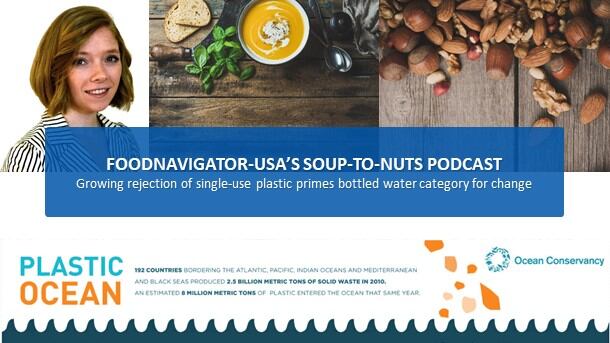Growing awareness of the environmental impact of “ubiquitous plastic packaging,” which accounts for 63% of global packaging for food, beverage, beauty, home care and pet food products, is encouraging people to take action, according to Euromonitor’s Top 10 Global Consumer Trends report released this month.
It explains that consumers increasingly struggle to justify the use of plastic as they once had now that they know they cannot rely on the promise it could be recycled or reused given the rate at which plastic is recovered, recycled and reused is “far from optimal,” according to the report.
China’s decision last year to no longer accept plastic from the Western World for treatment and repurposing, could further damage the rate and consumer perception of the option, Euromonitor adds.
Several CPG food and beverage companies already are responding to consumer demand for less packaging by seeking alternative materials.
Nestlé announced Jan. 15 that it is accelerating its previously announced commitment to make 100% of its packaging recyclable or reusable by 2025 with a particular focus on avoiding plastic-waste.
“While we are committed to pursuing recycling options where feasible, we know that 100% recyclability is not enough to successfully tackle the plastic waste crisis,” Nestlé CEO Mark Schneider said in a release. “We need to push the boundaries and do more. We are determined to look at every option to solve this complex challenge and embrace multiple solutions that can have an impact now.”
For example, Nestlé will begin eliminating all plastic straws from its products in February, as well as begin rolling out paper packing for Nesquik in the first quarter of this year. In the second half of the year, it will transition to paper packaging for Yes! Snack bars and introduce plastic-free packaging for Smarties candies.
Nestlé Waters also will increase the recycled PET content in its bottles to 35% by 2025 globally and 50$ in the US by the same time.
The company’s new Institute of Packaging Sciences also will explore other packaging solutions.
Nestlé is far from the only company reducing plastic packaging. Startups Open Water, formerly Green Sheep, and JUST Water have always used non-plastic packaging for their beverages.
Open Water opted for aluminum bottles and cans because the material is recycled more often than other beverage container at a rate of about 67%, compared to plastic, which is about half of that, according to the company.
JUST uses a paper-based bottle with a cap made of sugarcane, which it selected because they are renewable resources.
Rising packaging materials for 2019 and beyond
Euromonitor predicts the packaging options highlighted in these examples will grow exponentially through 2022.
It notes in 2017 flexible aluminum/plastic packages made up about 100 billion units, but will grow at a compound annual growth rate of 4% to about 1,000 billion units in 2022.
Similarly, it notes, flexible paper packages will grow at a CAGR of 1.5% to about 400 billion units in 2022, and folding cartons will grow at a rate of 2.5% to around 500 billion units in the same time period.
Other materials that Euromonitor predicts will gain traction include PET bottles, thin walled plastic containers, HDPE bottles, and to a lesser extent metal beverage cans and glass bottles.
Consumers reward alternative packages
While change is never easy, consumers will reward companies that embrace more environmentally friendly packaging, Euromonitor predicts.
It notes in 2017 about 15% of consumers said they would pay more for fresh food in “environmentally conscious or eco-friendly” packaging. Slightly more than 18% said in 2017 they would pay more for food and beverage products with recyclable packaging.
A measured approach
As the anti-plastic movement grows, Euromonitor’s Industry Manager of Packaging Rosemarie Downey cautions a more nuanced approach to plastic may be better.
Rather than aiming for a plastic-free world, she says a better target might be a plastic waste-free world.
“It is important not to overlook plastic’s valuable contribution,” she said, nothing there “are inherent protective and resource-efficient benefits afforded by plastic in preventing food waste.”
As such, she recommends focusing on a circular economy approach and ensuring plastic recovery and re-use as well as optimizing waste management infrastructure and greater consumer understanding of plastic handling post-use.




